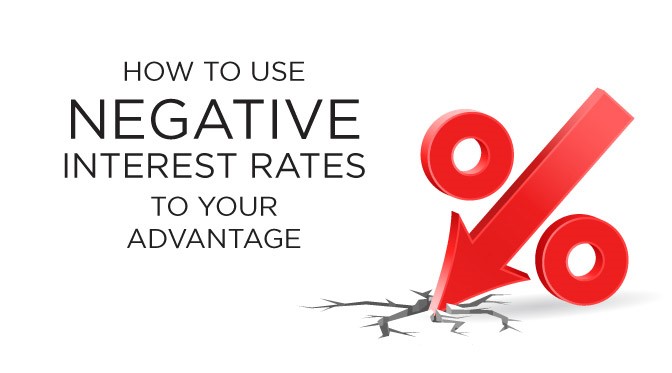NIRP stands for Negative Interest Rate Policy. Whispers of implementing this un-charted technique are running wildly through economic circles right now. When you know more about NIRP and how it affects the way you borrow and spend money, you have more control over your finances.
The U.S. economy is a credit-based economy, meaning that when you borrow money from a bank, it isn’t backed by gold; in fact it may be created from thin air. Read How to Better Understand the Premise of Money to learn more about how money earned its value. Everything hinges on the agreement that we won’t all go to the bank and cash in at the same time. This premise is the foundational block on which the U.S. economic tower is built.
In this type of economy, a delicate juggling act is played between spend, supply, inflate price, and repeat. The hope is that consumer confidence, corporate profits, and employment all stay high. When people hoard money instead of spending it, the consumer markets see a reduction in demand, prices fall, and unemployment rises. It’s called deflation—a backed-up economy that requires more than a spoonful of castor oil.
How does an interest rate go lower than zero?
Central banks in the U.S. and the Federal Reserve set interest rates to manipulate the economy and keep it balanced. NIRP is a largely untested policy where the interest rate actually dips to a negative value. Yes, below zero interest. It’s a thing.
Put simply, a negative interest rate means that the bank is actually paying people to borrow money and charging people to keep their money in the bank. They are essentially saying, “Can we pay you to spend this money?”
Why would they do this? It’s a last-ditch effort flush the economy with more spending. And the problem with using a last-ditch effort is that it raises a giant red flag to the public. Because group-think and mass mentalities are real, panic could ensue (picture the opposite of Black Friday).
Several countries including Japan, Sweden, Switzerland, and Denmark have toyed with negative interest rates with mixed results. Japan has had negative interest rates for a while and unfortunately has experienced people borrowing money only to hoard it in their houses (the sale of safes skyrocketed though). Denmark has used this tactic the longest. They’ve learned that if people are paying to store money in the bank and actually getting paid to have a mortgage, housing costs go through the roof.
What would a NIRP mean for me?
Your job is to educate yourself and watch for important signs, decisions, and shifts in the economy. Low, zero, and negative interest rates are one sign that the economy has become volatile. Looking back, many smart investors watched the signs around the housing bubble, and (though human behavior can’t be precisely predicted) those who were patient and had liquid cash were able to find opportunity within the chaos when housing prices fell. They were the victors and not the victims.
Another way to protect your wealth is to shift the way you think about your financial strategy. Just because most people invest the same way doesn’t mean it’s the best way. Start thinking in terms of how you can invest at a lower risk and still have liquid money when smart investments present themselves. In the event of a NIRP, the last place you want to keep your savings is in the bank.
We have a smarter strategy. Learn how to achieve greater control of your wealth and increase your liquidity with The Perpetual Wealth Strategy. We teach it for free via an eLearning course of video tutorials, articles, and podcasts. It costs you nothing to become educated on this proven financial strategy that will change the way you view your wealth.
Take advantage of this FREE resource by clicking below.








